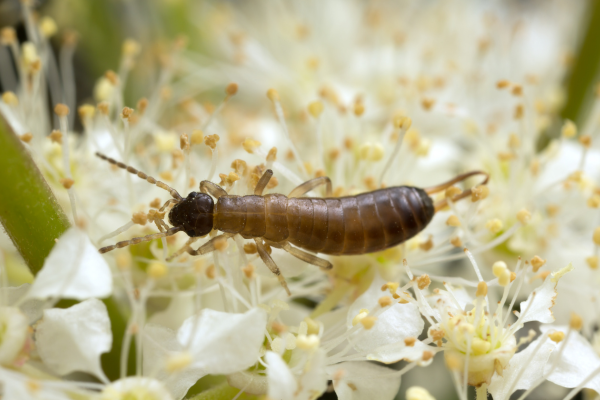Your cart is currently empty!

11 Sep Earwig Life Cycle: From Eggs To Adults
The world of insects is filled with fascinating creatures, and the earwig (order Dermaptera) is no exception. With their distinctive pincers and enigmatic appearance, earwigs often capture our curiosity and sometimes even evoke apprehension. Understanding the life cycle of earwigs can provide valuable insights into their behaviour, development, and role in the ecosystem. In this blog, we will explore the earwig life cycle, from the early stages of eggs to the fascinating adulthood of these tiny yet mysterious creatures.
Stage 1: Egg
The earwig life cycle begins when adult female earwigs lay their eggs. Earwigs, like many insects, are oviparous, which means they reproduce by laying eggs. The female earwig carefully selects suitable locations for her eggs, often choosing dark and moist environments to provide protection and humidity.
The number of eggs laid by a female earwig can vary depending on the species, but it typically ranges from a few dozen to a hundred. Once the eggs are deposited, the female takes on the responsibility of guarding and caring for them, protecting them from potential threats and ensuring their survival.
Stage 2: Nymph
When the eggs hatch, tiny nymphs emerge from the egg capsules. Earwig nymphs resemble miniature versions of adult earwigs but lack fully developed wings and pincers. The nymphs go through a series of moults, shedding their exoskeletons as they grow and develop.
During the nymphal stage, earwigs display maternal care, where the mother continues to watch over and protect her offspring. The nymphs remain close to their mother for some time, benefiting from her guidance and defence against predators.
Stage 3: Molting
As the nymphs continue to grow, they undergo a process known as moulting or ecdysis. Moulting is a crucial stage in the earwig life cycle as it allows the nymphs to shed their exoskeletons, which have become restrictive due to their increasing size.
During moulting, the nymphs secrete a fluid that softens the old exoskeleton, making it easier to shed. Once the old exoskeleton is shed, the new one underneath is soft and vulnerable. It takes some time for the new exoskeleton to harden and provide protection to the growing nymph.
Stage 4: Adulthood
After completing several moults, the nymphs eventually reach adulthood. At this stage, they have fully developed wings and pincers, characteristic of adult earwigs. Adult earwigs are now capable of reproduction and carry out their role in the ecosystem.
Earwigs continue to display a degree of maternal care even in adulthood. While not as intensive as during the nymphal stage, adult female earwigs may still provide some level of care and protection to their offspring.
The earwig life cycle is a testament to the wonders of nature and the intricate processes that shape the behaviour and development of these mysterious insects. From the careful egg-laying by the adult female to the protective care displayed during the nymphal stage, earwigs exemplify the complexities of insect life. Understanding the earwig life cycle not only enriches our knowledge of these creatures but also highlights their valuable contributions to the ecosystem. As predators and decomposers, earwigs play an essential role in maintaining the delicate balance of nature, contributing to pest control and nutrient recycling.
Don’t let earwigs and other pests take over your garden and disrupt its harmony. Take a proactive approach to pest management with Nema Globe Flea & Chinch Bug Buster.
By choosing this eco-friendly solution, you’re making a positive impact on your garden’s health and supporting sustainable gardening practices.
A vibrant and thriving garden awaits you when you arm yourself with the natural power of beneficial nematodes. Act now to protect your plants, promote biodiversity, and embrace responsible pest management. Visit the Environmental Factor website and secure your Nema Globe Flea & Chinch Bug Buster today!


